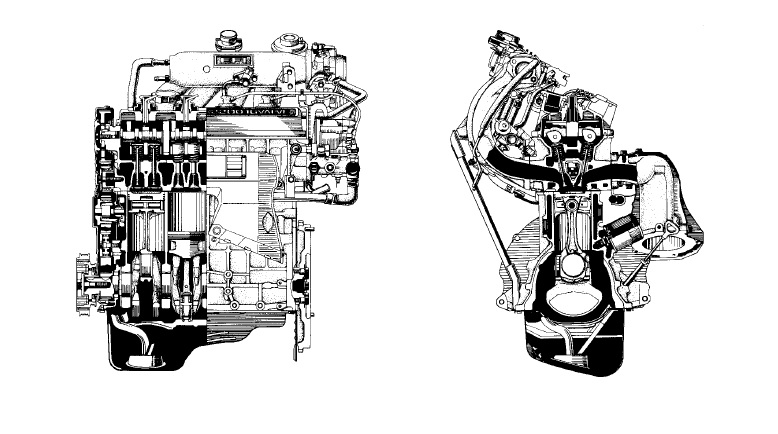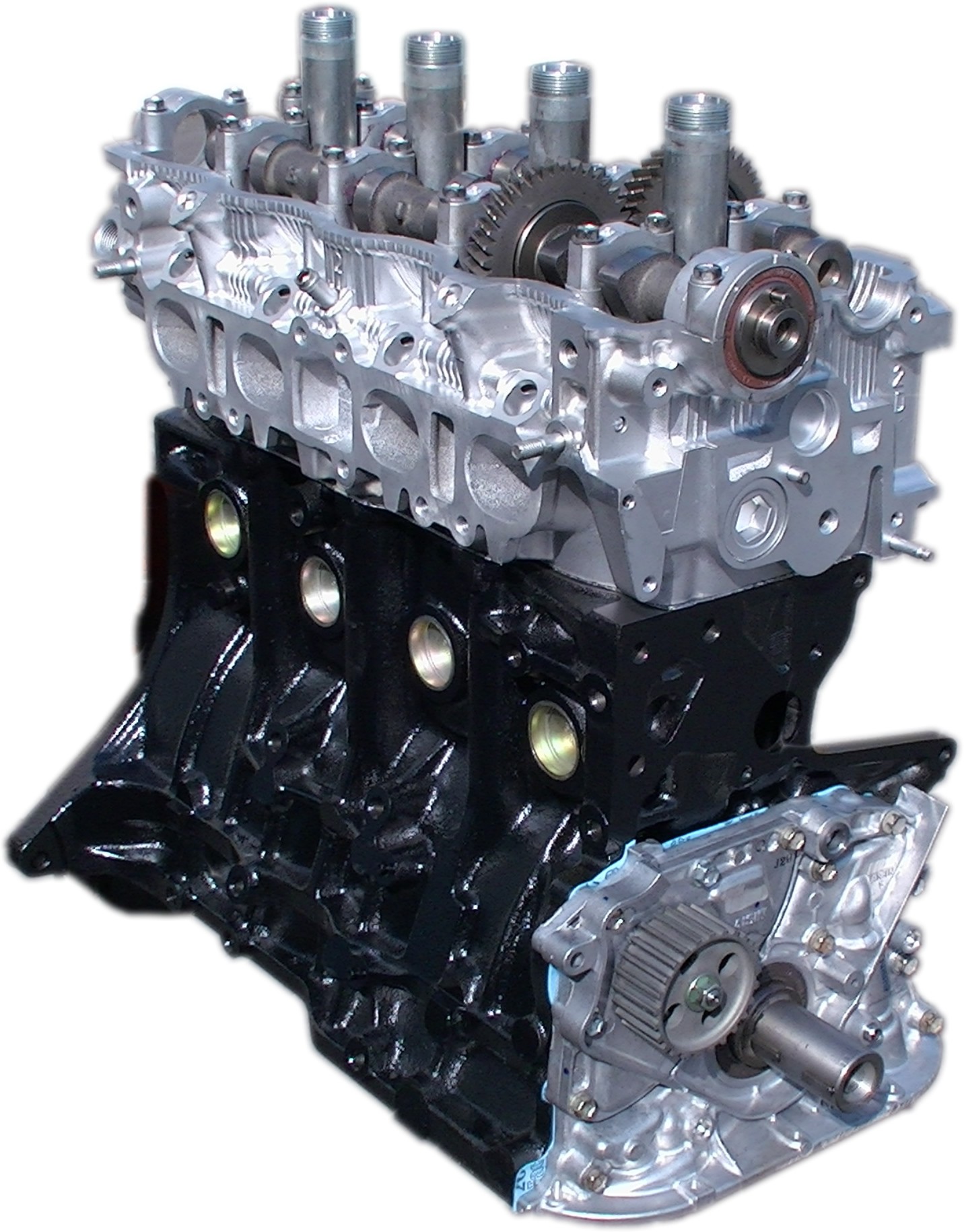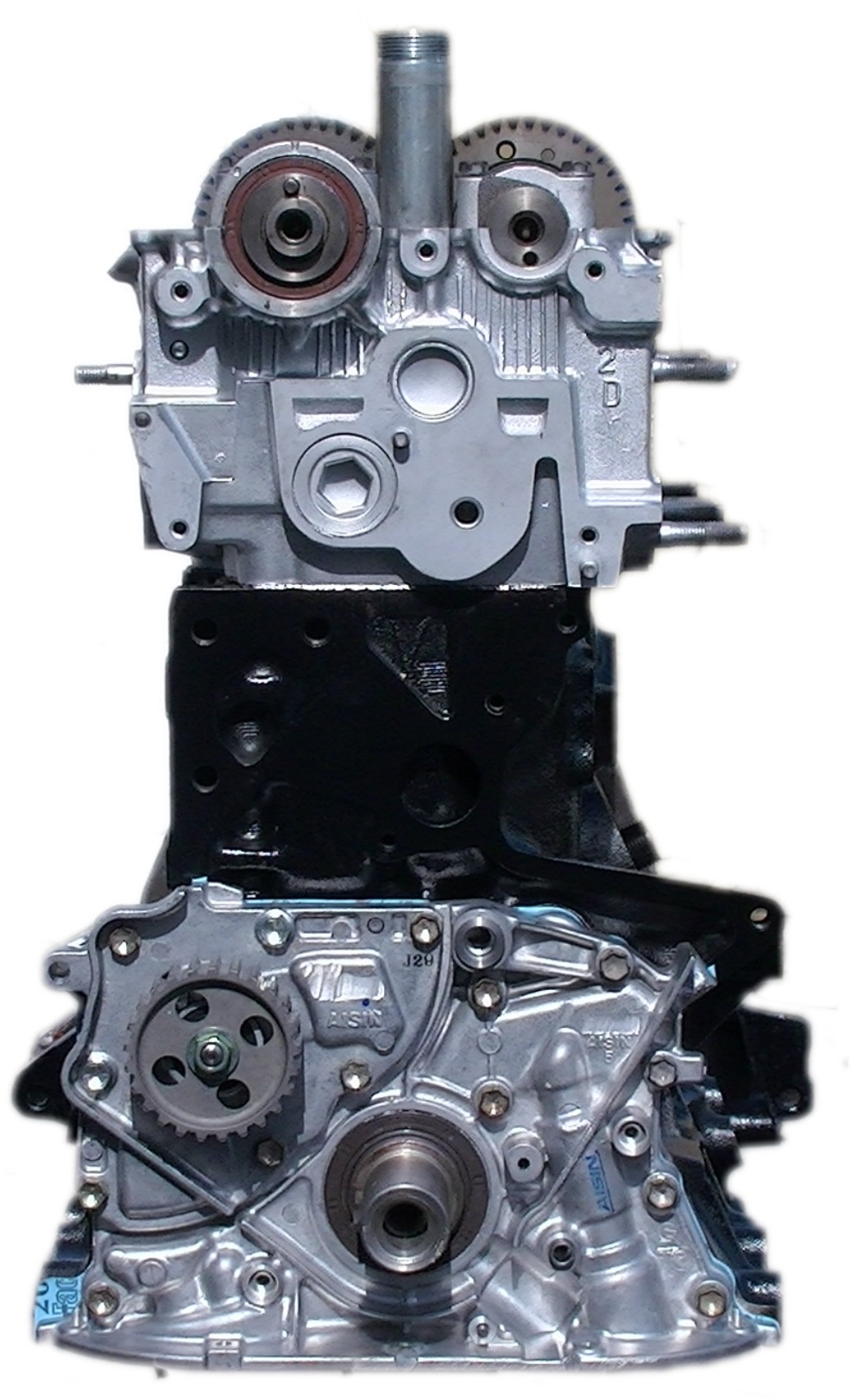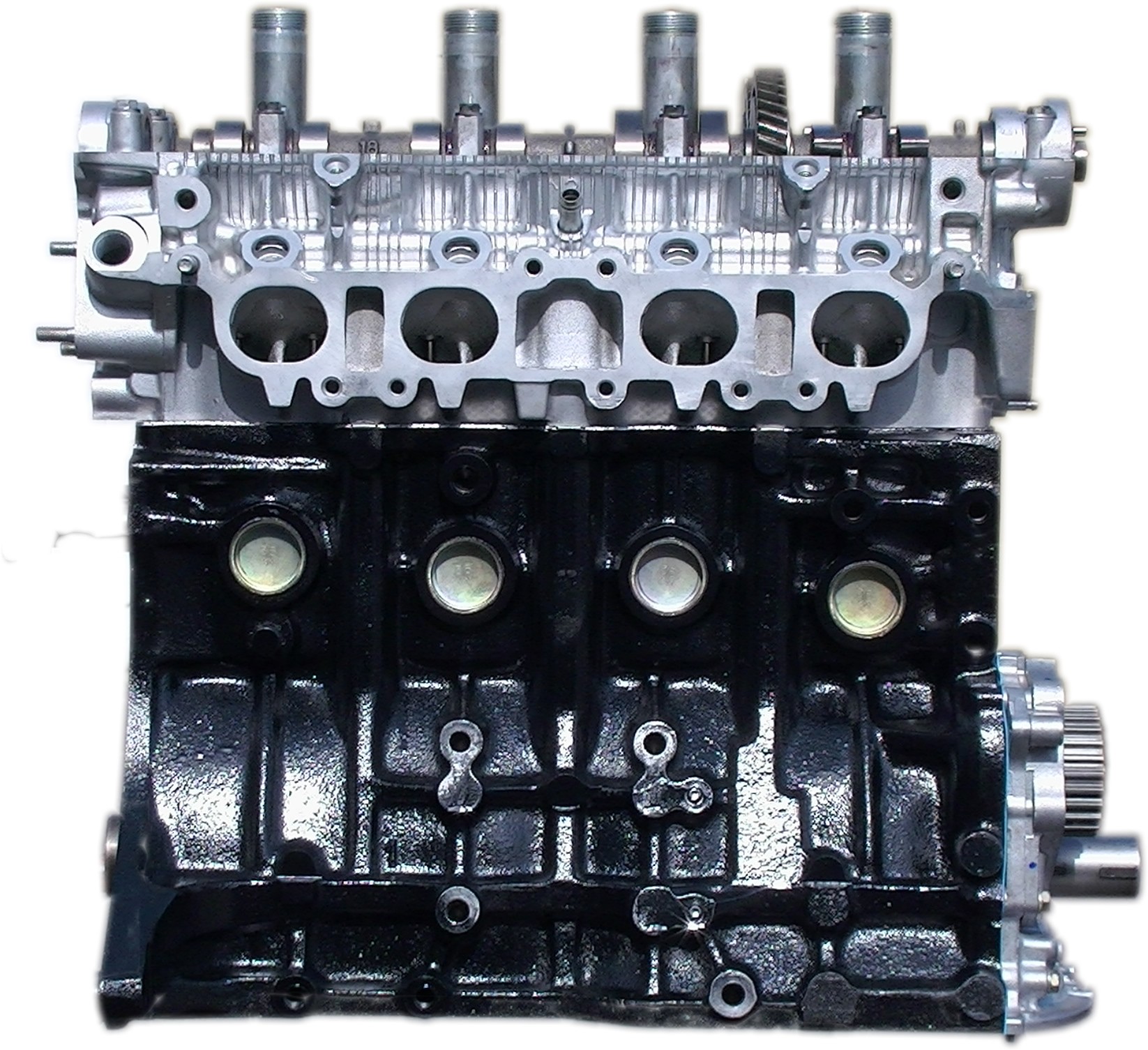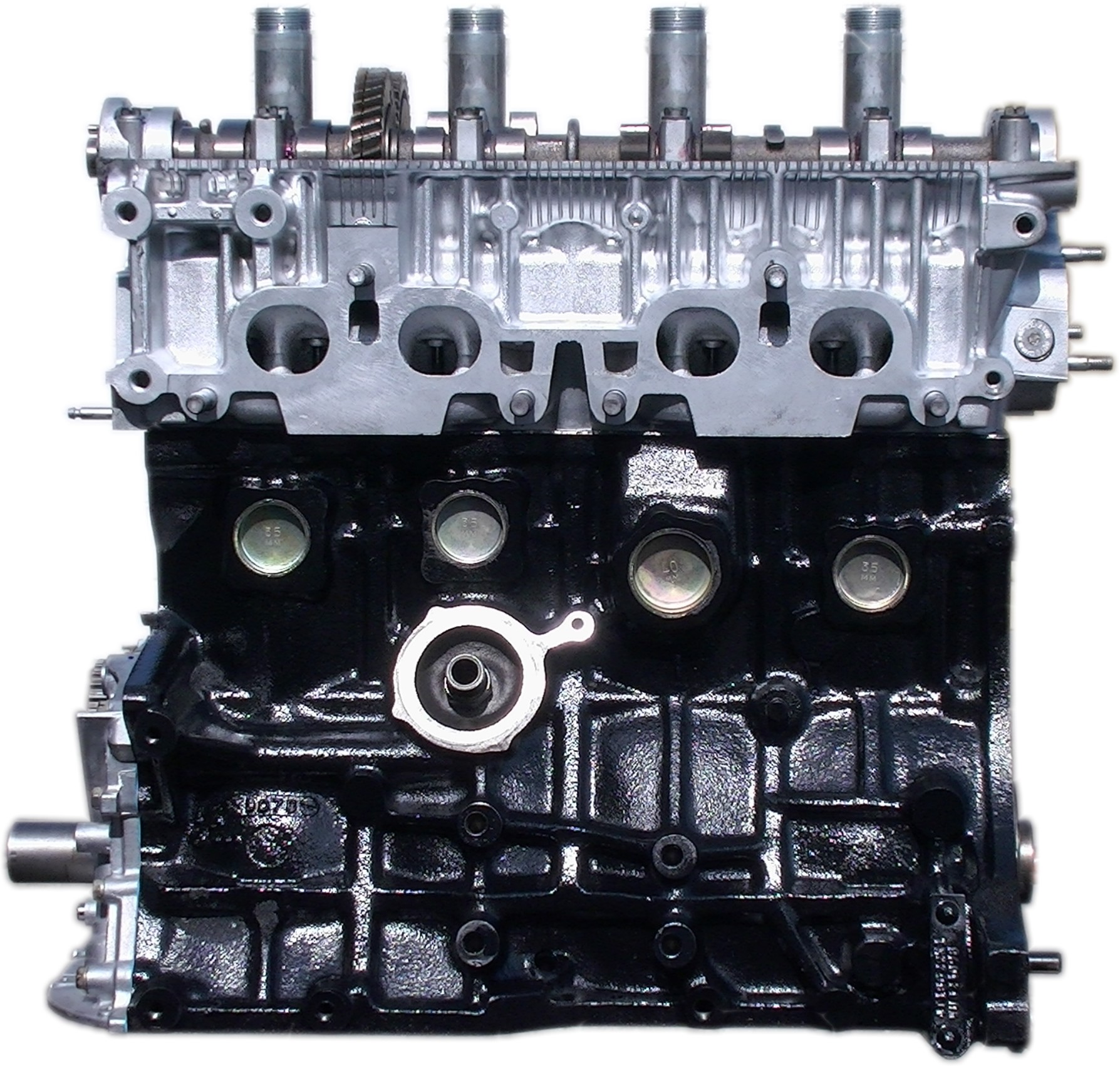Introduction
Toyota’s 5S-FE was a 2.2-litre four-cylinder inline petrol engine. The 5S-FE was a non-interference engine and shared many attributes with the 3S-FE, but was distinguished by its increased bore and stroke. Key features of the 5S-FE engine include its cast iron block, aluminium alloy cylinder head, double overhead camshafts and 9.5:1 compression.
During its production, the 5S-FE underwent two distinct updates, sometimes referred to as the second and third ‘generations’ or ‘revisions’ –
- Second generation: introduced in the XV10 Camry, the second generation 5S-FE had less aggressive camshaft profiles, introduced a knock sensor and had more aggressive tuning; and,
- Third generation: introduced in the XV20 Camry, the third generation 5S-FE engine introduced external camshaft and crankshaft sensors, Toyota’s ‘Direct Ignition System’ (see ‘Ignition’, below) and the cold start injector was omitted.
Within Australia, the 5S-FE engine was used in the T180 Celica, T200 Celica, XV10 Camry and XV20 Camry (see table below). For the Camry, the 5S-FE was ultimately replaced by the 2.4-litre 2AZ-FE engine.
| Engine | Trans. | Years | Peak power | Peak torque | |
|---|---|---|---|---|---|
| Toyota E180 Celica | 2.2-litre petrol I4 | 5sp man., 4sp auto |
1989-94 | 100kW at 5400rpm | 194Nm at 4400rpm |
| Toyota T200 Celica | 2.2-litre petrol I4 | 5sp man., 4sp auto |
1994-99 | 100kW at 5400rpm | 196Nm at 4400rpm |
| Toyota XV10 Camry | 2.2-litre petrol I4 | 5sp man., 4sp auto |
1993-97 | 93kW at 5200rpm | 189Nm at 4400rpm |
| Toyota XV20 Camry | 2.2-litre petrol I4 | 5sp man., 4sp auto |
1997-02 | 95kW at 5200rpm | 187Nm at 4400rpm |
5S-FE block
The 5S-FE had a cast iron block with 87.1 mm bores and a 90.9 mm stroke for a capacity of 2164 cc. The 5S-FE cylinder block contained a water jacket through which coolant was pumped to cool the cylinders, while the oil pan was bolted onto the bottom of the cylinder block.
Compared to the 3S-FE, the cylinder block skirt was redesigned and the bore walls were thicker. To reduce vibration and noise, reinforcement was added to the right-side mounting bracket area and the block-to-transmission joint.
The 5S-FE engine was mounted at four points as per the 3S-FE engine. The 5S-FE engine, however, introduced cylindrical liquid-filled compound mounts at the left and right sides to reduce engine noise and vibration.
Crankshaft, connecting rods and pistons
The 5S-FE engine had a forged iron crankshaft which had eight balance weights and was supported by five aluminium alloy bearings. Furthermore, oil holes were positioned in the centre of the crankshaft to supply oil to the connecting rods, bearings and pistons. Compared to the 3S-FE which had a cast iron crankshaft, pin diameter was increased from 48 mm to 52 mm for greater rigidity and the crankshaft bearing area was made more rigid to supress crankshaft radial movement.
The 5S-FE engine had hot-forged type connecting rods and kelmet alloy connecting rod bearings, while the connecting rod bearing caps were fastened with plastic region bolts.
The aluminium alloy pistons for the 5S-FE engine had a depression built into the piston head to prevent interference with the valves in the event of timing belt failure.
Whereas the 3S-FE engine had semi-floating piston pins, the 5S-FE engine had full-floating type pistons in which snap rings were fitted on both ends of the pins (to prevent the pins from falling out). Compared to the 3S-FE, piston pin diameter for the 5S-FE was increased from 20 mm to 22 mm for greater rigidity.
Of the piston rings,
- The no.1 compression ring was made of steel;
- The no.2 compression ring of cast iron; and,
- The oil ring was a combination of steel and stainless steel.
The outer diameter of each piston ring was slightly larger than the diameter of the piston and the flexibility of the rings allowed them to hug the cylinder walls when they were mounted on the piston. Compression rings no.1 and no.2 sought to prevent gas leakage from the cylinder and the oil ring worked to scrape oil off the cylinder walls to prevent it from entering the combustion chambers.
Balance shafts
For the Toyota Camry, the 5S-FE engine had two balance shafts – fitted in a housing at the bottom of the cylinder block – to eliminate secondary inertia forces from the engine. The no.1 balance shaft was driven by the drive gear of the no.3 crankshaft counterweight at twice the speed of the crankshaft. The no.2 balance shaft was driven by the no.1 balance shaft at the same speed and in the same direction as the crankshaft.
Intake and throttle
The intake manifold for the 5S-FE had four independent long ports that utilised an inertial supercharging effect to improve engine torque at low and medium speeds. The 5S-FE engine also had upright, small-diameter intake ports, while a resonator was fitted to the air intake hose to reduce induction noise.
For the ‘third generation’ 5S-FE engine introduced for the XV20 Camry, the lengths of the intake manifold ports were extended and intake air chamber capacity was reduced to improve torque at low to medium engine speeds.
The 5S-FE engine had a conventional throttle body whereby the throttle valve opening was determined by the amount of accelerator pedal effort.
Cylinder head
The 5S-FE engine had an aluminium alloy cylinder head – with a cross-flow type intake and exhaust layout – that was mounted on a head gasket made out of graphite fibres. Sealing performance was enhanced by the addition of wire rings around bore grommets and O-rings in the blow-by gas holes and oil return holes. Furthermore, plastic region-tightening bolts were used to improve sealing of the cylinder head gasket.
Camshafts
The 5S-FE engine had double overhead camshafts (DOHC, or Toyota’s ‘Twin Cam’) whereby the intake camshaft was driven by a timing belt and a gear on the intake camshaft engaged with a gear on the exhaust camshaft (belt and gear-driven). The camshaft journal was supported at five places between the valve lifters of each cylinder and on the front end of the cylinder head. Lubrication of the cam journals and gears was provided via the oiler port in the centre of the camshaft.
Valves
The 5S-FE engine had four valves per cylinder – two intake and two exhaust – that were actuated directly. The intake and exhaust valves both had irregular pitch springs that were made of special valve spring carbon steel. Valve clearance adjustment was via an outer shim type system in which valve adjusting shims were located above the valve lifters – this enabled the shims to be replaced without having to remove the camshafts.
Injection
The 5S-FE engine had an electronic fuel injection (EFI) system whereby the ECU determined fuel injection according to intake manifold pressure (which indirectly measured intake air volume), engine speed, coolant temperature and other inputs, then sent control signals to the fuel injectors. The fuel injection duration was also the basis for deciding the fuel injection timing.
When the 5S-FE engine was first introduced, the Camry had a two-group fuel injection system which injected two cylinders each, while the Celica had a simultaneous all-injection system. For the ‘third generation’ 5S-FE engine introduced for the XV20 Camry, the two-group injection system was replaced by sequential multiport injection.
The 5S-FE engine had pentroof-type combustion chambers. Compared to the 3S-FE, the squish area in the combustion chamber of the 5S-FE engine was redesigned to improve high-speed performance; part of the squish area around the intake valve area was removed to reduce intake air resistance. For the ‘third generation’ 5S-FE engine introduced for the XV20 Camry, the squish area of the combustion chamber was optimised to improve torque at low to medium engine speeds.
The 5S-FE engine had a compression ratio of 9.5:1.
Ignition
Whereas the 3S-FE engine had a conventional distributor which had a built-in coil, the 5S-FE engine initially had a separate coil-type distributor. To reduce weight, the diameter of the high-tension cord was changed from 7 mm to 5 mm. With Toyota’s ‘Electronic Spark Advance’ (ESA), ignition timing was determined by the ECU based on inputs from sensors.
For the ‘third generation’ 5S-FE engine introduced for the XV20 Camry, the Toyota ‘Direct Ignition System’ consisted of two sets of ignition coils that were integrated with igniter and with the high-tension cords attached directly onto the ignition coil. As such, the 5S-FE DIS was a two-cylinder simultaneous ignition system which ignited two cylinders simultaneously via one ignition coil. For the XV20 Camry, twin ground electrode platinum tipped spark plugs were also introduced.
Exhaust and emissions
Initially, the 5S-FE engine had a cast iron exhaust manifold. For the ‘third generation’ 5S-FE engine introduced for the XV20 Camry, however, the exhaust manifold was made of stainless steel for better performance and mass reduction. The number of exhaust pipe supports was also reduced from 5 to 4.
